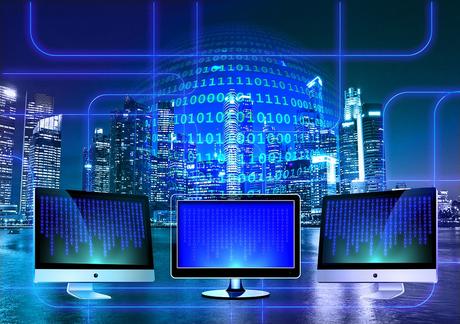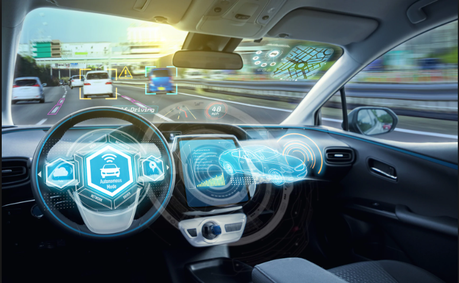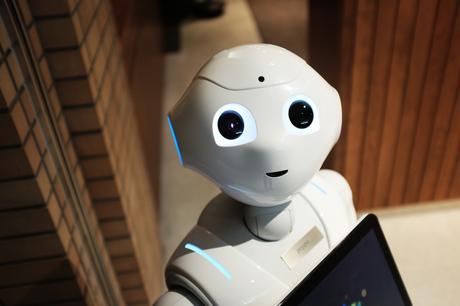The world of humans is a complex one. Thousands of thoughts and emotions are processed each day. Our behavior is not set or predefined.
It’s been our constant endeavour to try and make machines behave and think like us. This is where Artificial Intelligence(AI) and Machine Learning (ML) come in.

They have jointly been given the same importance as the discovery of electricity at the beginning of Industrial Revolution. Artificial Intelligence and machine learning trends are gradually bringing about transformative changes across industry sectors.
Machine learning
Learning is a profoundly important part of what makes us human. We learn and adapt to situations and improve them over time.
ML is a branch of AI that’s focused on making machines to learn without being explicitly programmed.
In today’s data-rich world, machines can aid in filtering useful pieces of information that help in major advancements.
In AI, machines perform “intelligent” tasks – not only repetitive ones. They adapt to different situations and present us with outcomes accordingly.
Deep learning is ML’s most dominant technique. It’s essentially a statistical method to teach machines how to classify patterns using (artificial) neural networks. These networks memorize categories and apply them to similar situations in a roughly reliable manner.
Machine learning trends today
ML already plays a part in our everyday life. You speak to your phone via Siri or Google Now and it fetches information, or you type in the Google search box and it predicts what you are looking for before you finish.
This has been made possible by machine learning.

Other examples are the self-driving Google car, cyber fraud detection, online recommendation engines—like friend suggestions on Facebook, Netflix showcasing the movies and shows you might like, and “more items to consider” on Amazon are all examples of applied machine learning.

Beyond search engines
It’s not just search engines, photo albums and speech systems that are benefitting from deep learning – Google is also using the technology in its research and prototyping of self-driving vehicles.
The idea is to enable these vehicles to perceive pedestrians in a similar way to us when we’re driving, to recognize automatically what poses a danger on the roads.
 courtesy : Alphr
courtesy : Alphr
Audi has unveiled an autonomous A7 and the R8 E-Tron Piloted Driving that uses a Nvidia processor to perform object recognition, and even specifics such as reading speed signs at the side of the road.
Indeed, many of the advances in self-driving cars have involved deep learning algorithms to some degree.

However, this is just the beginning. With companies such as Google and Microsoft spending millions on research into advanced neural networks and deep machine learning, computers are set to get smarter still.
The looming future
Rise of robots
As ML becomes more sophisticated, we’ll see an increased usage of robots. Robotization depends on machine learning for accomplishing various purposes, including robot vision, self-supervised learning, and multi-agent learning.

Drones, robots in manufacturing places, and other types of robots are likely to be used increasingly to make our lives easier. Robots will boost the process of personalized learning. Multi-function robotic cookers are able to fry, steam, bake, slow cook, and perform any other action without our intervention.
Also Read : Latest Augmented Reality Trends.
Improved personalization
Personalization algorithms are used to offer recommendations to users and entice them to complete certain actions.With such algorithms, you can synthesize the information in data and make appropriate conclusions, such as a person’s interests.

For example, an algorithm can deduce from a person’s browsing activity on an online retail website and discover that he is interested in purchasing a mower for his garden. Without that insight, the buyer could have left the website minus making a purchase.
In the future, personalization algorithms are likely to be fine-tuned, leading to far more beneficial and successful experiences.
Cognitive services
This allows developers to include intelligent capabilities into their applications. With such services, developers can empower their applications to carry out functions that can increasingly speak, hear, see, and even reason with their surroundings.
Developers will be able to build more engaging and discoverable applications that can effectively interpret users’ needs based on natural communication techniques.
ML is one of the most disruptive technologies of the 21st century. In the coming years, we are likely to see more advanced applications that stretch its capabilities to unimaginable levels.
Learn More About Custom, Native iOS or Android Mobile Apps and Clone Scripts here.

